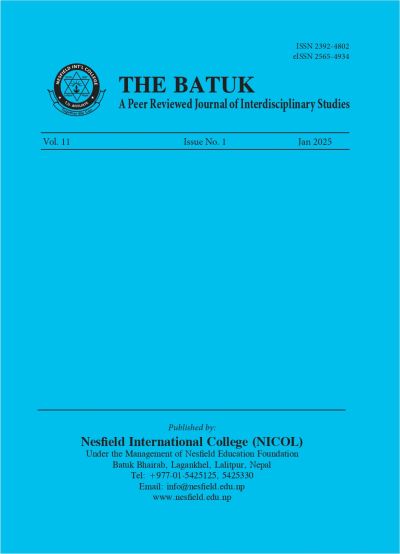Investigating Productivity of Microfinance Institutions in Nepal: Evidence from Panel Data Approach
DOI:
https://doi.org/10.3126/batuk.v11i1.74440Keywords:
productivity, microfinance, outreach, efficiency, panel dataAbstract
The objective of the study is to analyze the factor affecting productivity of microfinance institutions in Nepal. The institutional characteristics (such as age, number of branches and number of staffs), outreach (such as number of active borrowers and average loan size), and efficiency (cost per loan) are taken as independent variables and productivity is taken as dependent variable. The productivity is measured by number of borrowers per staff. The microfinance institutions (established before 2016 AD) operating in Nepal are selected as sample through the convenience sampling method. Taking panel data from 21 microfinance institutions from 2016/17 AD to 2023/24 AD with 168 observations, Fixed Effect regression model is used. The study found that number of operation year, number of branch and number of active borrowers has positive significant impact on borrower per staff but number of staff, average loan size, and cost per loan has negative significant impact on productivity of Nepalese microfinance institutions. The study has important implications for the policy makers of Nepalese microfinance institutions to improve their productivity by utilizing their resources and making sound policy towards staff and borrower.
Downloads
Downloads
Published
How to Cite
Issue
Section
License
Copyright (c) 2025 Nesfield International College

This work is licensed under a Creative Commons Attribution-NonCommercial 4.0 International License.
This license enables reusers to distribute, remix, adapt, and build upon the material in any medium or format for noncommercial purposes only, and only so long as attribution is given to the creator.




